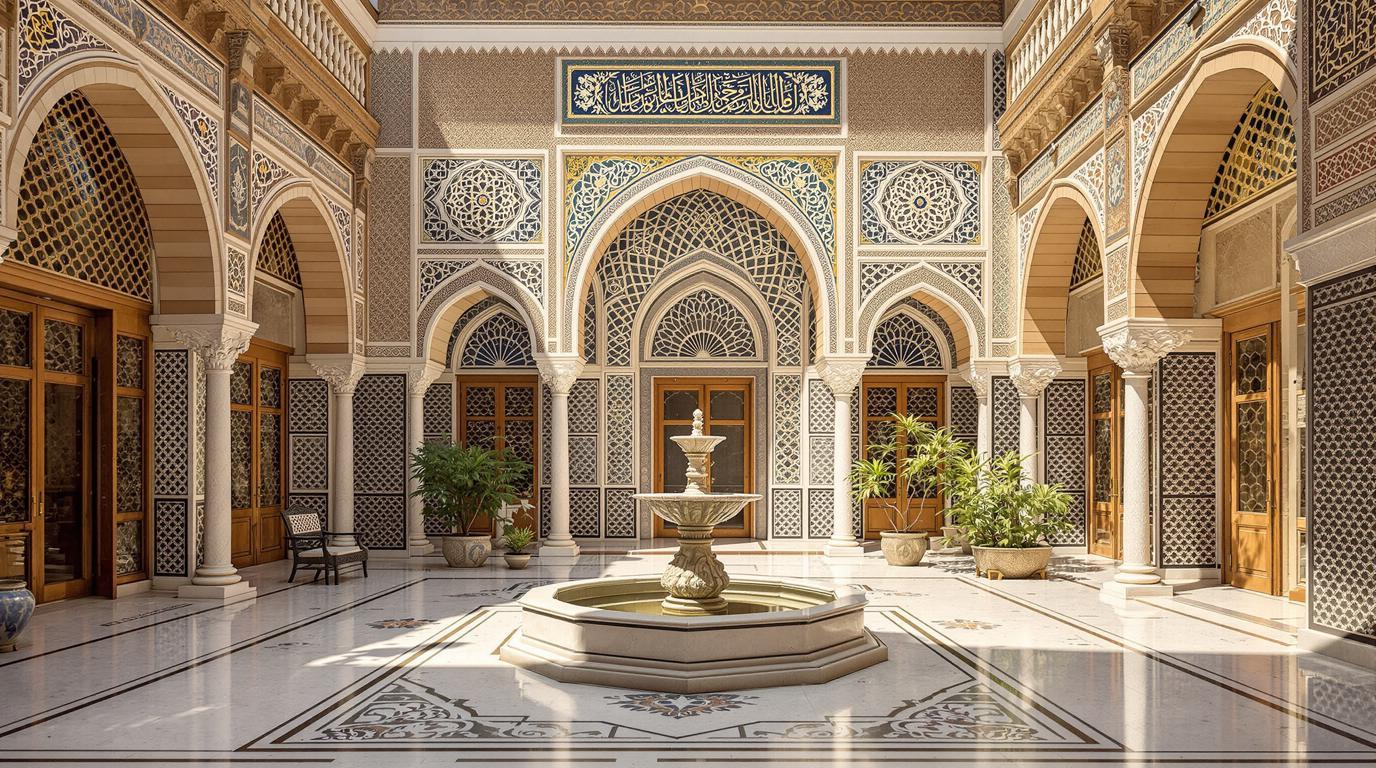I nearly walked past it—a whisper of serenity hiding behind an unassuming entrance on Paris’s Rue Geoffroy-Saint-Hilaire. Stepping through the arched doorway of the Grande Mosquée de Paris, I felt the city’s chaos dissolve into a symphony of trickling fountains and geometric shadows. What initially seemed like a brief cultural stop on my itinerary became the unexpected highlight of my week in the French capital, revealing layers of history and sensory experiences most travelers miss entirely.
Where Moroccan artistry meets French history
Completed in 1926 as a tribute to Muslim soldiers who died fighting for France in World War I, the Grande Mosquée represents more than just a religious landmark. Its construction during France’s colonial period created a fascinating architectural dialogue between North African design and European sensibilities.
“Many visitors don’t realize our mosque sheltered hundreds of Jews during the Nazi occupation,” explains Karim, a volunteer guide whose grandfather helped with the original construction. “The resistance used our underground tunnels to smuggle families to safety—we’re as much a monument to human solidarity as to Islamic faith.”
The mosque’s 33-meter minaret rises like an elegant exclamation point above the Latin Quarter, yet somehow remains overlooked by the tourist masses streaming toward Notre Dame just minutes away.
Three treasures hidden behind the minaret
The courtyard where time stops flowing
The main courtyard reveals itself like a secret garden, where intricate zellij mosaics from Morocco transform sunlight into kaleidoscopic patterns across marble floors. Unlike the Alhambra or Istanbul’s Blue Mosque, here you’ll likely find yourself alone with your thoughts, perhaps sharing the space with just a few local students from nearby universities sketching the architectural details.
Visit before 11 AM to experience the courtyard’s transformative quietude before tour groups arrive. The fountain’s gentle murmur creates an acoustic bubble that somehow mutes the city beyond these walls—a rare gift in bustling Paris.
The hammam’s forgotten healing chambers
Descend into the mosque’s traditional hammam, where steam carries whispers of eucalyptus through chambers lined with century-old tiles. Unlike Morocco’s tourist-oriented bathhouses, this authentic space primarily serves local Parisians. Women-only sessions run Tuesday through Sunday mornings, while afternoons welcome men.
For €45, you’ll receive traditional black soap, a kessa exfoliation glove, and access to the three temperature chambers. The middle room’s octagonal plunge pool offers the perfect cool respite between steam sessions—a ritual unchanged since the 1920s.
The library’s illuminated manuscripts
Behind an unmarked wooden door near the gift shop lies the mosque’s small research library, housing illuminated Qurans dating back to the 17th century. While not officially open to casual visitors, asking politely at the administration office often grants access to this hidden gem, where Islamic calligraphy and French bookbinding techniques merge in breathtaking harmony.
When I visited on a quiet Thursday afternoon, the librarian proudly showed me manuscripts that survived two world wars and contained marginalia from scholars across centuries—a tangible connection to intellectual traditions spanning continents.
Flavors that transcend tourist menus
The mosque’s courtyard café serves the expected mint tea and baklava, but venture instead to the worker’s canteen tucked behind the main restaurant. Here, steaming tagines of lamb with preserved lemon and honey arrive without fanfare or inflated prices, served family-style at communal tables where conversation flows between locals and in-the-know visitors.
Try the Friday couscous special—fluffy semolina topped with tender vegetables and merguez sausage made by the imam’s brother in the 18th arrondissement. At €12, it’s half the price of similar dishes in tourist establishments, with twice the authenticity. Pair it with a glass of almond-infused milk rather than the more common mint tea for a truly local experience.
Navigating the sacred space respectfully
Timing your visit for authentic connections
Arrive 30 minutes after prayer times (easily found online) to witness the gradual transition from religious service to cultural space. The moments between formal worship and tourism offer glimpses into the mosque’s living community rather than just its architectural beauty.
Sunday mornings host an informal cultural exchange where visitors can learn basic Arabic calligraphy from volunteer instructors—bring your own notebook and expect to make new friends through the universal language of art.
Dress considerations beyond the basics
While modest clothing is expected, what many guidebooks miss is that bringing your own scarf (for women) or wearing socks (for everyone) allows deeper access. Visitors who arrive prepared are often welcomed into areas usually reserved for worshippers, including the stunning library with its collection of rare manuscripts.
The fragile balance of discovery
As I watched afternoon light filter through the carved wooden screens, casting honeycomb shadows across the courtyard, I realized why some of France’s most precious cultural treasures remain relatively undiscovered. The mosque exists in perfect equilibrium—accessible enough for curious travelers yet preserved from the footfall that would transform its tranquil authenticity into performative tourism.
Like other ancient architectural wonders that maintain their original purpose, the Grande Mosquée offers something increasingly rare in our checklist travel culture: a living monument where history breathes alongside contemporary life, inviting contemplation rather than mere consumption.
